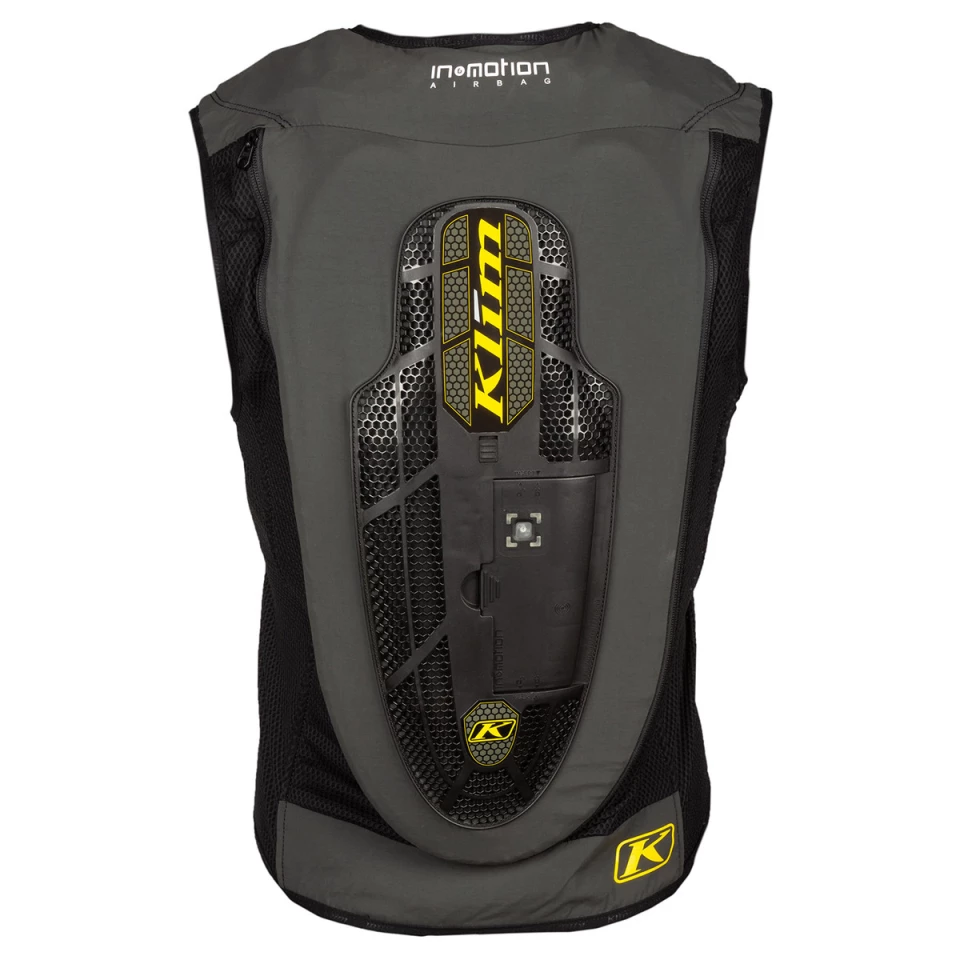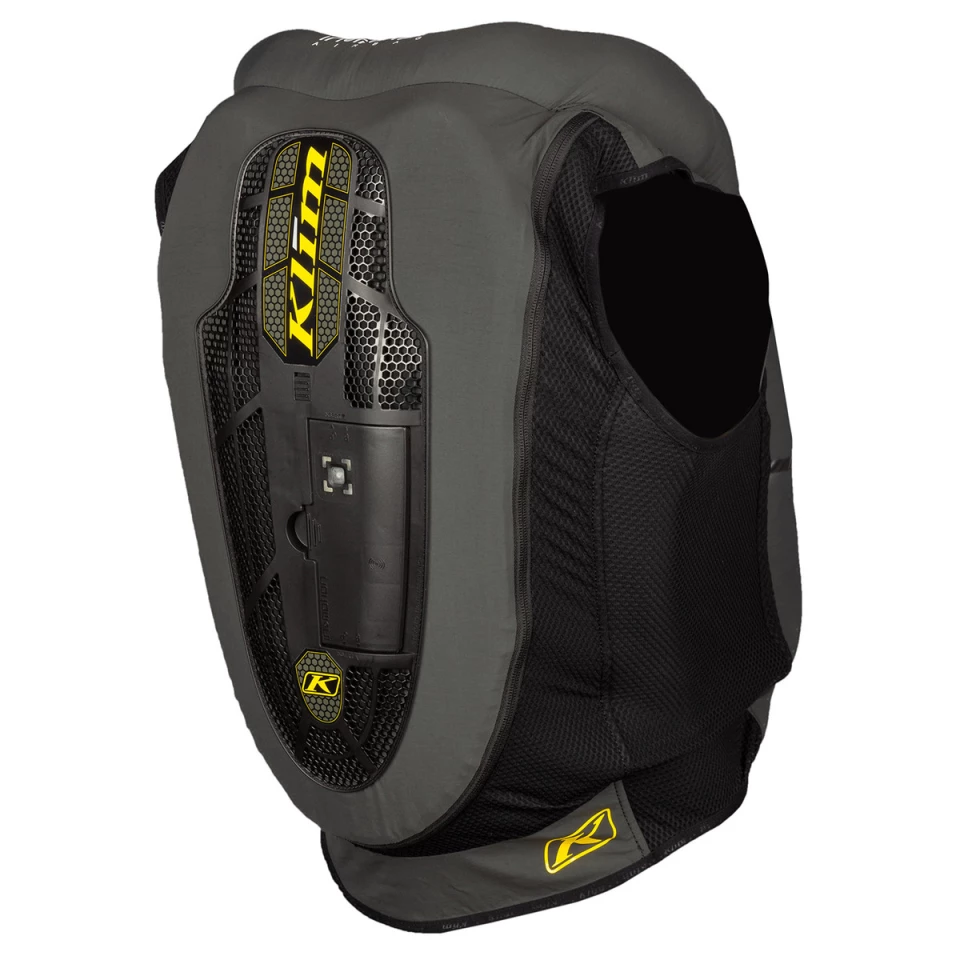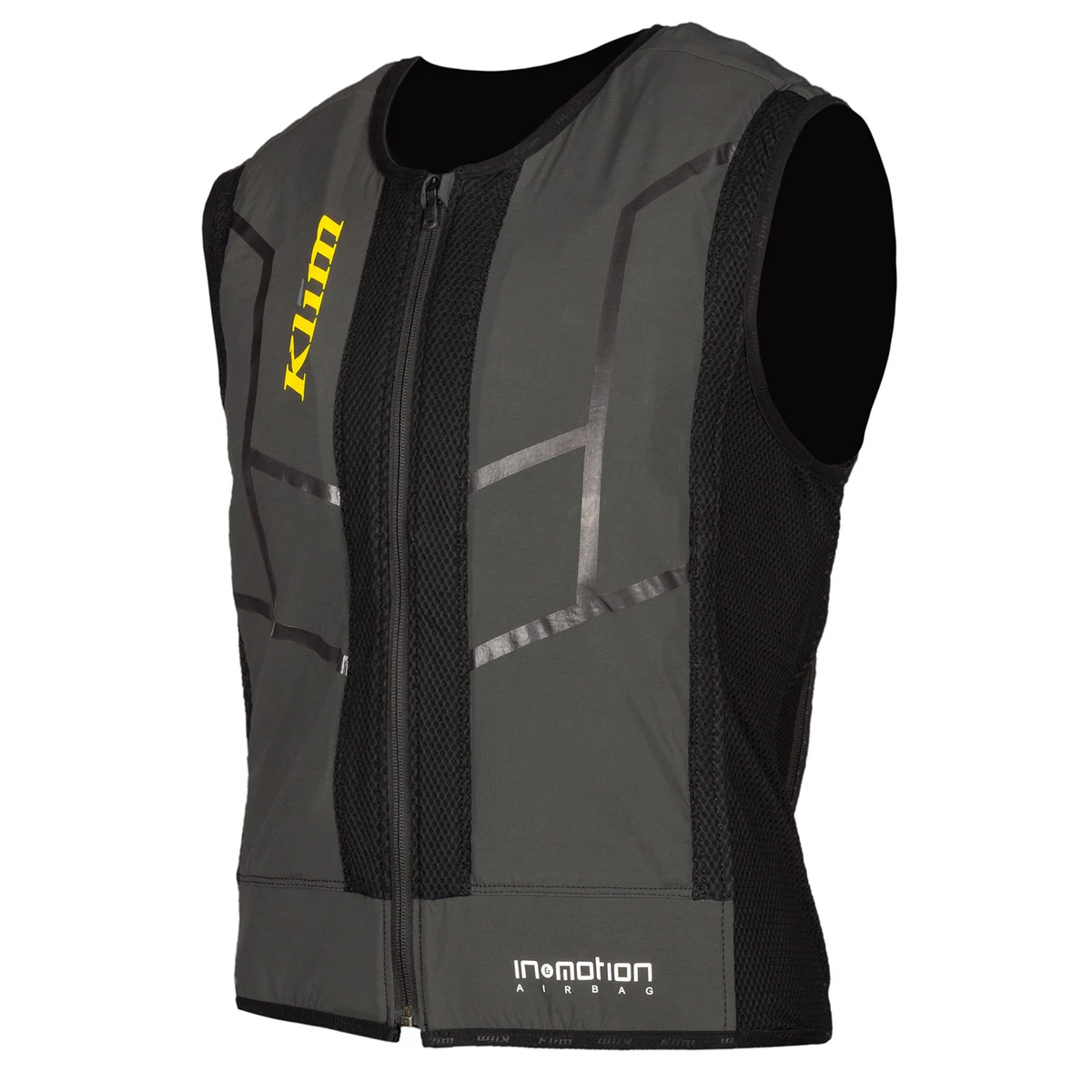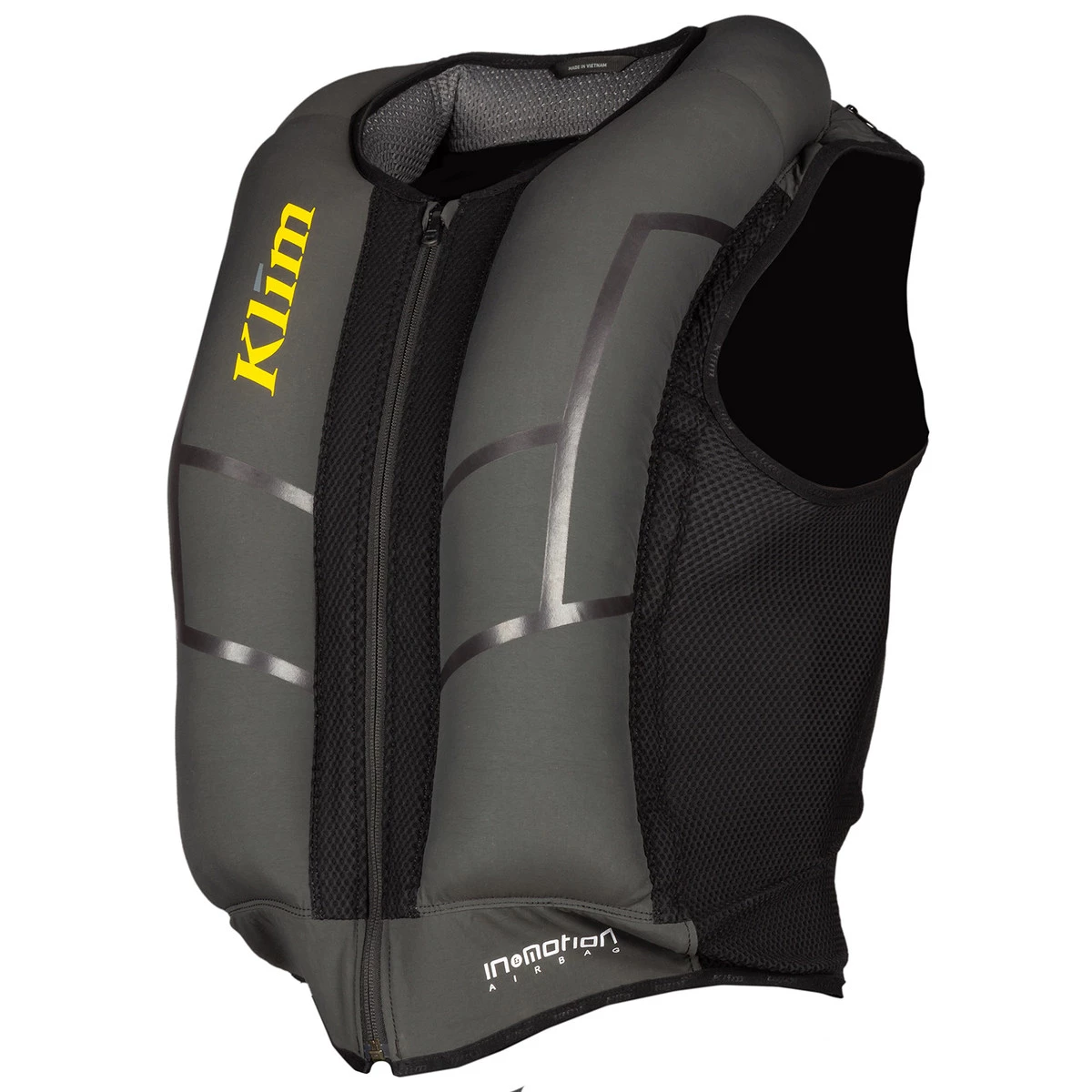Motorcycle airbag tech has come a long way since Honda first put airbags on the Goldwing. The latest generation of riding gear makes energy-absorbing torso protection more accessible and less annoying than ever before.
Forget the idea of tethering yourself to your bike on a ripcord, these things use high-fidelity sensor suites and intelligent AI to constantly evolve their algorithms, working out exactly when you're crashing a motorcycle and when you're not, to go off exactly when you need them to.
French company In&Motion supplies AI-enhanced airbag tech to a range of motorcycle protective gear manufacturers, including Held, Klim, Ixon, Furygan, RST and others, and they've hooked me up with a Klim AI-1 airbag vest, in which I've been riding around for the last month or so.
The AI-1 is a simple and well-ventilated vest you put on underneath whatever jacket you're wearing. It houses its own soft foam back protector, and while there is some harder plastic on the back, it's not what you'd call a hard shell protection system. Like everything I've looked at from Klim, it's a premium piece, using moisture-wicking, breathable materials that feel terrific to wear.

The In&Motion brain unit clips solidly into the back of the vest, next to a high-pressure argon canister that stands ready to rapidly inflate channels running through the back, over the shoulders and down the torso when it detects you're in trouble. Not only will it absorb impacts to your chest, abdomen and back, but the way it puffs up over your shoulders is designed to stabilize your neck when you hit the deck too.
It's a zero-friction addition to my riding gear; I've pulled the foam pads out of the backs of my jackets and just pop the AI-1 on underneath whatever I'm wearing like a regular back protector. There's one big button; you press it twice to turn the thing on, twice to turn it off.
The battery lasts around 25 hours, so it's good for a solid three days on the road or a couple of weeks' commuting, and a battery light warns you when it's time to charge. This process is simple; you detach the brain unit and plug it into a micro-USB port. And this is also when it gets a chance to phone home and update the In&Motion algorithms with everything it's learned since you last charged it.
While you're riding, the vest monitors and records your every move 1,000 times a second, using accelerometers, gyroscopes and GPS sensors. If you're a naughty person on the road, there's no need to worry; this data is entirely encrypted on the unit (I tried opening some files; complete gobbledygook), and it's anonymized before In&Motion analyzes it to improve its algorithms. Nobody can access it to find out what multiple of the speed limit you were doing when you crashed.
With 50,000-plus In&Motion units out on the road already, these algorithms are already highly refined, and as such all data sharing is something you can opt in or out of at any time.

How exactly does it decide when to fire the airbags? Well, this is where the AI comes in, and it's where things become a little opaque. In&Motion has a bunch of different applications it makes airbags for now – skiing, horseriding, and three different motorcycle modes for road, racetrack and now adventure/trail riding – and while a customer's expectations of the airbag tech will vary across these different modes, the company's approach is the same.
"The first step, is you need to have raw data, and a good amount of it," In&Motion co-founder and CTO Valentin Honoré tells me over a Zoom call. "It doesn't matter what the activity is, we need to work out simply how people are going to fall, and which falls they want to be protected by an airbag."
So the company puts data acquisition boxes on a bunch of people – athletes, racers, Dakar riders, road riders, and they go out and do their thing. Then, as the data builds up to a point where it could become useful, software specialists start labeling incidents in the data where an airbag should be firing.
This is the process by which they begin to train the AI algorithms, and once the algorithms start getting good at identifying these things automatically, the process is next to go back and feed the unlabeled raw data into them to make sure all known incidents are found. Once the algorithm is capable of firing correctly on 100 percent of known incidents, the next part is to begin cutting down on false positive triggers – times when the airbag has gone off without needing to – and for each situation the company is able to make a call on where to err.
On the racetrack, for example, past a certain speed, a false trigger could have grave consequences and cause a high-speed crash. So in track mode, the vest takes that into account and makes sure it doesn't overreact at high speeds.
Likewise, when you're riding motorcycles in the dirt, you're going to fall over more than you would on the road, and a lot of those falls will be low-consequence simply because dirt is softer than tarmac. It doesn't matter what the activity is, the guys out there collecting data talk over each incident with the team to work out whether the airbag should fire or not, and the AI system learns.
For now, switching between modes is a manual thing; you have to pull out your phone, open up the MyIn&Box app, and select Adventure mode when you're about to hit the dirt. I ask Honoré whether this is something that might become automatic in the future. "This is definitely something we're working on," he tells me, "but right now we're not at the point where we can detect the surface you're on with a precision of 100 percent. We don't want to switch the triggering strategy just because we made a mistake in the analysis. So we ask you to switch modes, and when you switch modes, you switch your mind as well. You start riding differently."

The system is sharp enough to detect dangerous situations within 20 milliseconds. It then monitors the situation for a further 20 milliseconds to make up its mind on whether to fire, and if it makes the call that you're in danger, it discharges its argon cylinder and fully inflates within another 30 milliseconds. That's less than a tenth of one second between situation normal and full airbag torso/neck protection – pretty damn quick.
With 50,000 riders on the road and several year's worth of data, Honoré tells me the system has recorded less than 100 false triggers, even erring on the side of false triggering for safety. It hasn't gone off for me when I've thrown it on my bed or against the wall ... So far, so good, I guess!
When it does go off, you get another argon cartridge for €90 (US$110), install it yourself and you're good to go – although the company recommends you send the garment in to be checked over after three inflations or any crash you suspect might've caused tearing or abrasion to the system.
What does this system realistically do in terms of protection? Well, In&Motion has a PhD student working full time on these questions: "How do we break a human body? What are the limits?" asks Honoré. "The answers are becoming clearer. If you go above this level of impact energy, you start to break ribs. At this level, you start to break the veins around your heart. At this level, from this direction, there is this chance of damage to your kidney.
"So there are things this vest is good for, and things it isn't. It's very hard for airbags to prevent a dislocation of the shoulder. But it can absorb a certain amount of blunt force trauma energy to the torso. Like the airbag in a car, it has its limits. It will absorb as much as it can and then it's done its job. That amount of energy can reduce some fatalities down to injuries, and some injuries down to nothing, so it's an extra level of safety."

Right now, the company just makes protection for the torso. Other companies are working on airbag pants with a view to preventing some leg injuries, too. Honoré says In&Motion is focusing on high-consequence life-saving torso trauma protection first and foremost, but that the company isn't fixed in its approach, and is open to the idea in the future.
I'm sorry to report, I haven't found the right opportunity to stack my bike in the time I've been wearing it, so in terms of a review, I can tell you this: the Klim AI-1 is comfy and easy to use, and the only thing it's done to annoy me so far is fall off a clothes hanger in the middle of the night and make my easily-startled missus yelp in a most amusing manner. And that was my fault; it comes with its own special hanger and I stuck it on a different one.
This tech is not cheap, but In&Motion has introduced a subscription plan to make it more accessible. The Klim vest itself costs US$399.99, and on top of that you can either lease the In&Box service for $120 a year, or buy it outright for $399. The former option gives you a replacement brain unit update every 3 years, and either way, your device will be updated with new firmware regularly as the AI models are updated. Adding track mode or adventure mode (suitable for trail riding, adventure touring and light enduro, not for freestyle backflips, hard enduro or trials riding) will cost you an additional $25 a year each.
So yes, it costs more than your average hundred-buck back protector, but it absorbs significantly more blunt force from more directions, and the price to get you protected and on the road is considerably less than competitors like the US$699 Dainese Smart Jacket. I think it's pretty clear that these clever gadgets only need to protect you once to be worth the money. And they'd certainly make a great gift for the motorcyclist in your life that might not stump up for one of their own accord. Check out a video below.
Source: In&Motion









